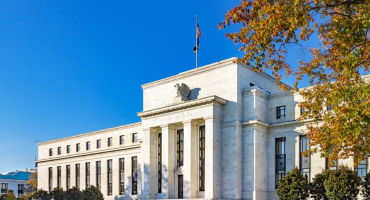- Fixed Income and Global Insurance Strategist
Skip to main content
- Funds
- Capabilities
- Insights
- About Us
Asset classes
Hong Kong (香港), Individual
Changechevron_rightThe views expressed are those of the authors at the time of writing. Other teams may hold different views and make different investment decisions. The value of your investment may become worth more or less than at the time of original investment. While any third-party data used is considered reliable, its accuracy is not guaranteed.
Today’s market participants often lament that credit spreads are too compressed. Indeed, in many cases, spreads — having reached the top percentile in historical tightness across some sectors — may offer little upside potential. However, several disparate factors tend to drive total returns in fixed income and explain why spreads could remain in this lower range for some time.
Focusing too narrowly on spreads and awaiting a mean reversion toward more attractive levels could cause investors waiting on the sidelines to forgo some compelling investment opportunities. Investors should be aware of several key factors that may drive their fixed income returns in the current environment:
1. Spread dispersion
Despite tight spreads across some sectors at the index level, dispersion is still fairly wide in spreads among different sectors and individual issuers. And there’s no shortage of potential drivers of spread volatility, including diverging central bank monetary policy, continued geopolitical conflict, and volatile US fiscal policy. Further dispersion among credit sectors would present more attractive entry points to add risk, in our view.
In fact, certain spread sectors, such as bank loans, collateralized loan obligations (CLOs), and commercial mortgage-backed securities (CMBS) remain attractive from a longer-term spread perspective. Many of these asset classes can be accessed through either standalone investments or multi-asset credit strategies.
2. Elevated yields
Yields remain near the high end of the range, and look reasonably attractive from a longer-term, historical-percentage basis. And given the relative flatness of the yield curve, fixed income investors don’t need to take on significant duration risk to find attractive yield opportunities. Figure 1 shows that while the historical spread percentile across credit segments ranks at the tightest extremes, yields look much more attractive.
Importantly, one of the single most significant drivers of expected returns for a fixed income portfolio is the starting yield. Figure 2 depicts the ending yield-to-worsts (YTWs), or the lowest potential yield that an issuer can pay on a bond without defaulting, of several fixed income indices on a historical basis. Each dot represents monthly observations of YTW and the Y axes show the corresponding annualized return over the ensuing three years. The blue bars represent the index yield levels as of 31 January 2025. Note the general upward sloping shape of returns versus starting yields.
3. The “risk-off” factor in yields today
When interest rates were low and approaching the zero lower bound, the recessionary risk mitigation of the underlying Treasury rates in credit was relatively low, unless one assumed that interest rates could move into negative territory. In today’s elevated yield backdrop, the underlying Treasury yield can act as more of a potential “shock absorber” through risk-off cycles that move spreads wider.
4. Added value through active management?
Finally, if yield alone isn’t a significant inducement, flexible total return fixed income strategies can toggle risk on and off, depending on the manager’s assessment of relative valuations and return skew. In our view, attractiveness of valuations may continue to diverge across fixed income sectors, creating potential opportunities for dynamic strategies that can take advantage of security or sectoral dislocations.
Given the uncertainty of the current rate cycle — a dynamic compounded by persistent geopolitical risks — we believe a prudent approach to fixed income allocations may be maintaining a benchmark-agnostic approach with flexibility to pursue security- or sector-dislocation-driven opportunities as they arise.
Experts


Related funds

Low tide, sharp eyes: What to pick up
Fixed Income Managers Campe Goodman and Rob Burn share their outlook for credit in 2026 and discuss how investors can reposition for an environment where opportunities are harder to find.

Practical portfolio considerations for a new economic age
Solutions Director Andrew Sharp Paul explores practical portfolio considerations for a new economic age, focusing on quality equities, discerning bonds, and local APAC opportunities.

Rapid Fire Questions with Ross Dilkes
In this edition of “Rapid Fire Questions,” fixed income portfolio manager Ross Dilkes shares his views on the Asia credit market—covering the macro outlook, China’s momentum, the most compelling opportunities across the region, and key risks shaping the next 12 months.

Chart in Focus: Is the Fed rate cut positive for risk?
In this edition of Chart in Focus, we examine how the Fed’s long-awaited interest rate cut may influence risk assets.

Chart in Focus: What do higher long-end yields mean?
Long-end yields have climbed on concerns over structural growth and fiscal expansion. In this edition of Chart in Focus, we explore how shifting yield curves are reshaping opportunities across asset classes.

Chart in Focus: Fed rate cuts resume — What’s next for investors?
In this edition of Chart in Focus, we explore the Fed’s return to rate cuts after a strategic pause. We examine how this move, alongside diverging central banks paths, could shape the outlook for risk assets.

FOMC: Cushioning the US labor market
Fixed Income Portfolio Manager Jeremy Forster analyzes the Fed's decision to cut interest rates at the September FOMC meeting.

How a changing Europe is reshaping credit markets
Portfolio Managers Derek Hynes and Konstantin Leidman explore how a changing Europe is reshaping the region's credit markets and identify key takeaways for investors.

Chart in Focus: Where are rates headed?
In this edition of Chart in Focus, we take a look at where rates have been headed and potential implications moving forward.

(Re)emerging markets: 10 reasons for optimism
Our experts identify 10 reasons why now may be the time for investors to reconsider emerging markets.
Multiple authors

Facing a new economic reality
We summarize our 2025 mid-year outlooks.
URL References
Related Insights
DISCLOSURE
This material and its contents may not be reproduced or distributed, in whole or in part, without the express written consent of Wellington Management. This document is intended for information purposes only. It is not an offer or a solicitation by anyone, to subscribe for shares in Wellington Management Funds (Luxembourg) III SICAV (the Fund). Nothing in this document should be interpreted as advice, nor is it a recommendation to buy or sell shares. Investment in the Fund may not be suitable for all investors. Any views expressed are those of the author at the time of writing and are subject to change without notice. Investors should carefully read the Key Facts Statement (KFS), Prospectus, and Hong Kong Covering Document for the Fund and the sub-fund(s) for details, including risk factors, before making an investment decision. Other relevant documents are the annual report (and semi-annual report).
© 2025 Morningstar, Inc. All Rights Reserved. The information contained herein: (1) is proprietary to Morningstar; (2) may not be copied or distributed; and (3) is not warranted to be accurate, complete or timely. Neither Morningstar nor its content providers are responsible for any damages or losses arising from any use of this information. The Overall Morningstar Rating for a fund is derived from a weighted average of the three, five, and ten year (if applicable) ratings, based on risk-adjusted return. Past performance is no guarantee of future results.
Issued by Wellington Management Hong Kong Limited. Investment involves risk. Past performance is not indicative of future performance. This document has not been reviewed by the Securities and Futures Commission of Hong Kong.
We seek to exceed the investment objectives and service expectations of our fund investors and their advisers worldwide
© Copyright 2025 Wellington Management Hong Kong Limited. All rights reserved.
WELLINGTON MANAGEMENT® is a registered service mark of Wellington Group Holdings LLP.
Wellington Management Hong Kong Limited 威靈頓管理香港有限公司 is a private company incorporated with limited liability in Hong Kong, with its address at 17/F Two International Finance Centre, 8 Finance Street, Central, Hong Kong. It is licensed and regulated by the Securities and Futures Commission of Hong Kong with CE Number AJB478.